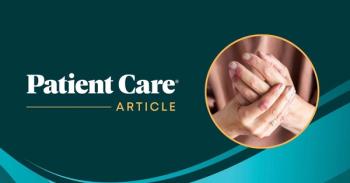
Patients with Severe OSA at Two-fold Higher Risk for Sudden Death, New Study Shows
Results of a new systematic review and meta-analysis by researchers at Penn State College of Medicine underscore needs for patient education and additional research on prevention.
In persons with obstructive sleep apnea (OSA) risk for sudden death and cardiovascular mortality is 2-fold greater than for those without the disorder, according to results of
The investigators also found a “marginally significant” dose-response relationship where the highest risk of mortality was seen in those with severe OSA.
In the US, estimates are that 15% of adults are diagnosed with OSA and that a large population suffers from OSA-like symptoms but does not receive a diagnosis or treatment, according to study authors. OSA is known to significantly impact quality of life (QoL) and to increase the risk for developing a number of cardiovascular comorbidities, including heart failure, cardiac arrhythmias, and coronary artery disease. Moderate-to-severe OSA also increases risk of all-cause mortality.
Patients with OSA may not be aware that the common condition can be fatal, according to co-author author John S. Oh, MD, assistant professor in the Department of Surgery at Penn State Health Milton S. Hershey Medical Center. “This is something that many patients do not consider when they are diagnosed with the condition,” he said in a Penn State
Penn State researchers, led by Emily S Heilbrunn, MD, project coordinator in public health sciences at Penn State Health Milton S. Hershey Medical Center, conducted a systematic review and meta-analysis of the MEDLINE, Cochrane, Scopus, and Joanna Briggs Institute Evidence-Based Practice databases through January 1, 2020. Studies that reported rates of sudden death in patients with OSA and studies that reported rates in patients both with and without OSA were included. Heilbrunn and colleagues identified 4613 reports of which 22 observational studies met eligibility criteria. The final quantitative analysis included a total of 42 099 participants (mean age, 62 years; 64% men).
RESULTS
Study authors report a pooled risk ratio (RR) for all-cause sudden death of 1.74 (95% CI, 1.44-2.1) and RR for CV mortality of 1.94 (95% CI, 1.39-2.7). Calculation of dose-response relationship between OSA severity and all-cause sudden death found it to be marginally significant in individuals with mild OSA (RR = 1.16; 95% CI, 0.7-1.93), moderate OSA (RR = 1.72; 95% CI, 1.11-2.67) and severe OSA (RR = 2.87; 95% CI, 1.7-4.85).
Older age was identified as a significant contributing factor in the relationship between OSA and mortality in a meta-regression analysis (P=.003).
“This study highlights the importance of appropriate prevention measures to reduce the incidence of OSA and OSA-related sudden death,” said added co-author Heilbrunn. “Providing accessible and affordable treatments for populations with OSA may ultimately reduce adverse health outcomes for these individuals.”
The authors note that results should be interpreted with caution based on the potential for persistent residual confounding in estimates provided by each study. They point out, too, that they combined adjusted and unadjusted RR when calculating pooled estimates which may have been the reason for the observed medium between-study heterogeneity. Finally, the study included data from 5 continents, but did not contain any from Africa or Antarctica. The researchers said future research studies should explore the association between OSA and mortality in populations not represented in this study.
Reference: Heilbrunn ES, Ssentongo P, Chinchilli1 VM, Oh J, Ssentongo AE. Sudden death in individuals with obstructive sleep apnoea: a systematic review and meta-analysis. BMJ Open Respiratory. Research. 2021;8:e000656.
Newsletter
Enhance your clinical practice with the Patient Care newsletter, offering the latest evidence-based guidelines, diagnostic insights, and treatment strategies for primary care physicians.



















































































































































































































































































